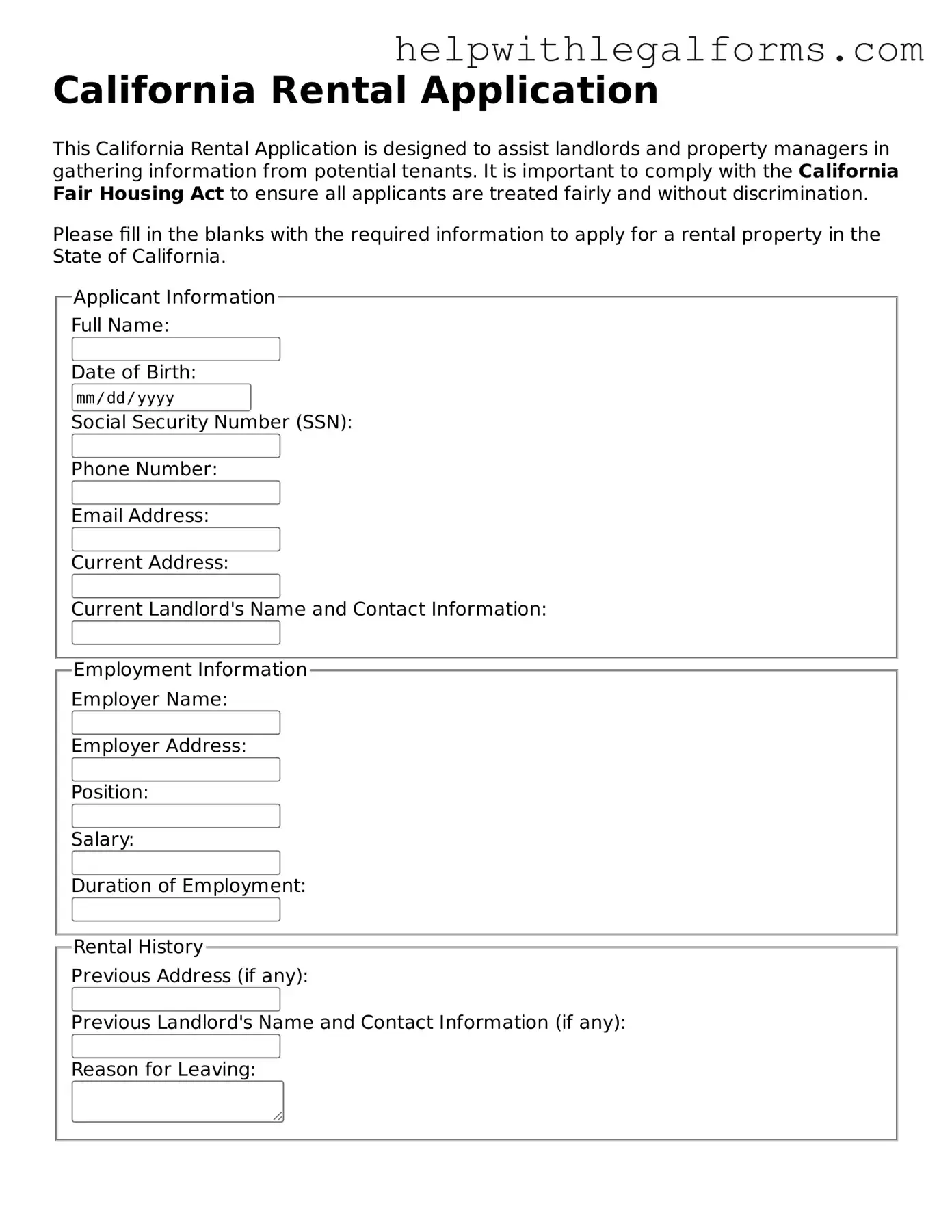What is a California Rental Application Form?
A California Rental Application Form is a document used by landlords and property managers to collect information from potential tenants. This form helps screen applicants to ensure they are suitable for the lease agreement. Information typically required includes personal details, rental history, employment information, and references. The purpose is to assess the reliability and suitability of a tenant in terms of paying rent on time and maintaining the property.
Is there a fee to submit a California Rental Application Form?
Yes, in California, landlords and property managers can legally charge a non-refundable application fee. This fee covers the cost of background checks, including credit, criminal history, and eviction records. The amount varies but is regulated by law to ensure it does not exceed the actual out-of-pocket costs of these background checks. It's important for applicants to ask for a receipt and a detailed account of how the fee was used.
Can anyone be asked to provide a Social Security number on the Rental Application Form?
Landlords in California often request Social Security numbers (SSN) on rental applications to perform credit checks and verify identity. However, applicants have rights concerning their personal information. If providing an SSN makes an applicant uncomfortable, they might inquire if alternative identification or credit verification methods can be used. Landlords are interested in assessing financial reliability, so they might be open to other ways of verifying creditworthiness.
What happens if an applicant is rejected based on the information provided in the California Rental Application Form?
If an applicant is rejected based on information obtained during the background and credit checks, the landlord must provide an "adverse action" notice. This notice details the reasons for rejection and includes the contact information of the agencies that reported the unfavorable information. Applicants have the right to a free copy of the report from the agency and to dispute inaccuracies within the report. This process ensures transparency and offers applicants the opportunity to correct any errors in their records.
